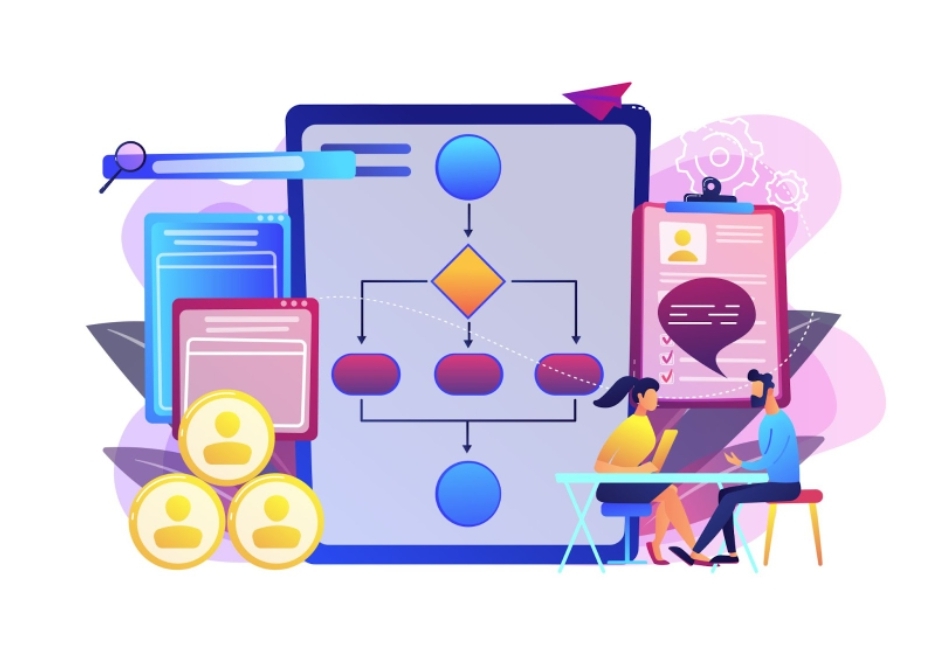Inbound Marketing Strategies for SaaS Companies
In the extremely competitive terrain of SaaS (Software-as-a-Service) companies, powerful marketing approaches are undoubtedly vital to attracting, transforming, and involving clients. Today, inbound marketing is being branded as a pivotal approach that B2B companies can utilize to interact with their target audience, improve their reputation, and strengthen long-term growth. In the course of this guide, we will treat the topic of inbound marketing for SaaS companies, gaining insights into main strategies, techniques, instruments, and practice-based examples, which may help to successfully promote your company in the modern digital age.
Understanding Inbound Marketing for SaaS
Inbound marketing is a kind of activity that aims at delivering engaging content to the target audience to get them connected to the brand through the process of individually oriented communication. A Campaign of inbound marketing by SaaS providers in the center of a basis of productive, educational content that provides answers to consumers, girlfriends, and needs of the target audience, respectively. Embarking upon this path involves networking, reputation-building, and increased trust from clients to aid in their journey to make a purchasing decision.
Key Components of Inbound Marketing for SaaS
- Content Marketing: Produce top-grade content, like blog posts, eBooks, white papers, case studies, infographics, and videos, that addresses your potential customers’ most nagging concerns. Recount the most frequently asked questions and suggest solutions to issues that could arise. Also, demonstrate what you are offering and how it benefits the users vis-à-vis your SaaS product and/or service.
- SEO Optimization: Ensure your content & website is optimized to the search engines for you to accelerate visibility & organic traffic. Carry out keyword research, put in order meta tags, create stimulating descriptions, enhance the speed of the site, and hit on the mobile-friendly optimization for increased user experience.
- Social Media Engagement: Utilize prominent social media channels like Instagram, Facebook, and Twitter to disseminate your content, interact with your audiences, and create an audience for your brand. Apply targeted listening to social networks to answer queries, react to what your customers are saying, and generate your product improvement.
- Email Marketing: Build an email marketing strategy to follow up and develop leads as well as to give prospects quality information and drive conversions. Personalize your emails depending on the subscribers’ preferences, behavior, and lifecycle stage to avail them of precise and rightful messages that will be related to them timely.
- Marketing Automation: Apply marketing automation software that would allow you to simplify tasks, automate repetitive activities, and deliver unique personified experiences for your audience. Leverage automated functions for lead scoring, audience segmentation, email marketing sequences, and behavioral activity triggers.
- Conversion Optimization: Make use of persuasive CTAs (Calls-to-Action), A/B testing, convincing messaging, enticing copywriting, and an easy-to-navigate design to achieve maximum conversion rates from your website and landing pages.
Best Practices for Inbound Marketing Success in SaaS
- Know Your Audience: Carry out extensive studies to learn about your audience, pain areas, inspirations, and actual buying moves. Create buyer personas to micro-target your content that feels personal and relevant to them.
- Create Valuable Content: Remember the emphasis on producing content that is of value, informative, educational, useful, and desirable aspects for your viewers. Clarify and postulate your SaaS software installation or — provision as an alternative to their problems and needs.
- Optimize for SEO: Drive your SEO efforts to strengthen your position on search engines, lead to higher organic traffic, and boost web visibility as much as possible. Proper use of SEO-friendly content with optimal meta tags, backlinks, and performance monitoring through analytics tools can facilitate the process.
- Build a Strong Online Presence: Build a well-established online presence by using all digital channels available, which include your website, blog, and social media platforms as well as involvement in industry forums. Build up and create relationships with the audience; bring forward ideas, and demonstrate leadership.
- Utilize Marketing Automation: Take advantage of marketing automation solutions that would help you simplify processes, nurture leads, and get a good visibility of customer interactions. Utilize audience data which will help to tailor content, group audience segments and maximize campaign effectiveness.
- Monitor and Measure Results: Track each important metric, like website traffic, leads generated, conversions, email open rates, and customer retention regularly. Rely on the analytical tools to track the performance, locate patterns to get insight, and seize the chance to make informed choices.
Tools and Technologies for Inbound Marketing in SaaS
- Content Management Systems (CMS): Mediums, like WordPress, HubSpot CMS, and Drupal make content building, publishing, and optimization easier due to their SEO consequence.
- Marketing Automation Platforms: For instance, the fast-paced marketing world requires reliable tools like those provided by HubSpot, Marketo, or Pardot, which incorporate lead scoring, email marketing, and workflow automation features.
- Social Media Management Tools: Social networks like Hootsuite, Buffer, and Sprout Social allow automatic posting, post scheduling, and user engagement measurement.
- SEO and Analytics Tools: Tools such as Google Analytics, SEMrush Moz, and Ahrefs assist with understanding website traffic, positions of keywords, and links, as well as outstanding optimization opportunities.
- Email Marketing Software: Platforms like Mailchimp, Constant Contact, and SendGrid are examples of such tools that make it possible for businesses to create email campaigns, broadcast them, and track when they have been sent, also allows the management of subscriber lists.
Also Read: AZE300X: Pioneering the Symphony of AI-Powered Business Revolution
Conclusion
The inbound marketing strategy is the key principle for the SaaS companies that operate in the market for delivering growth, acquiring customers, and building long-term relationships. By providing useful content, and employing SEO, automation, engagement, and customer interaction across digital platforms, SaaS businesses can thereby be successful in attracting, converting, and retaining their customers.
By capitalizing on suitable tactics, tools, and best practices, SaaS organizations can better optimize the reach of inbound marketing and reach sustainable success in the turbulent market today.







